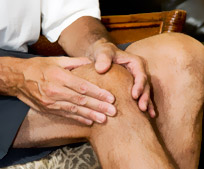Arthritis: The #1 Cause of Disability
|
There are more than 100 types of arthritis, but the two most common are osteoarthritis and rheumatoid arthritis. Osteoarthritis, also known as degenerative joint disease, usually comes with age. Beginning at about age 40, cartilage (the cushioning material between joints) breaks down, which can lead to joint pain and stiffness. The joints that are most affected are those in our fingers, knees, spine, and hips. Osteoarthritis also can occur after an injury to a joint. For example, a young soccer player who injures a knee could develop arthritis down the road, some 10 to 15 years later. Rheumatoid arthritis, on the other hand, is believed to be a systemic inflammatory disease and can develop at any age. It can show up in many different joints of the body and leads to the deterioration of cartilage and bone, and can cause joint deformity, pain, swelling, and redness. Although the exact cause is unknown, the Centers for Disease Control and Prevention suggests a faulty immune response may be involved. The great news is there's plenty you can do now to prevent arthritis, protect your joints, or improve your symptoms if you already have arthritis. First and foremost, if you think you've got arthritis, talk to your doctor. He or she can help determine the best course of action. If you're overweight, weight loss should be your next step! For every pound you lose, there's a 4-pound reduction in the load exerted on each knee for every step you take. Losing as few as 11 pounds can reduce the risk of getting osteoarthritis by 50%. Being more active might sound counterintuitive when you're experiencing joint pain and stiffness, but moving more can actually keep your joints flexible, help with weight control, and maintain muscle strength. What you eat or don't eat can make a difference, too. To learn more, read all about it in the attached article, Eat Right to Fight Inflammation. And last but not least, try natural alternatives. Studies show that long-term use of glucosamine helps maintain healthy cartilage and may even reduce the need for knee-replacement surgery in people with osteoarthritis. Results from a clinical study suggest the anti-inflammatory activity of Boswellia serrata extract reduces joint pain and stiffness, while fish oil supplements also have been shown to help fight inflammation. To learn more about some natural solutions visit: http://youarewell.myshaklee.com/us/en/whyshaklee.html |
